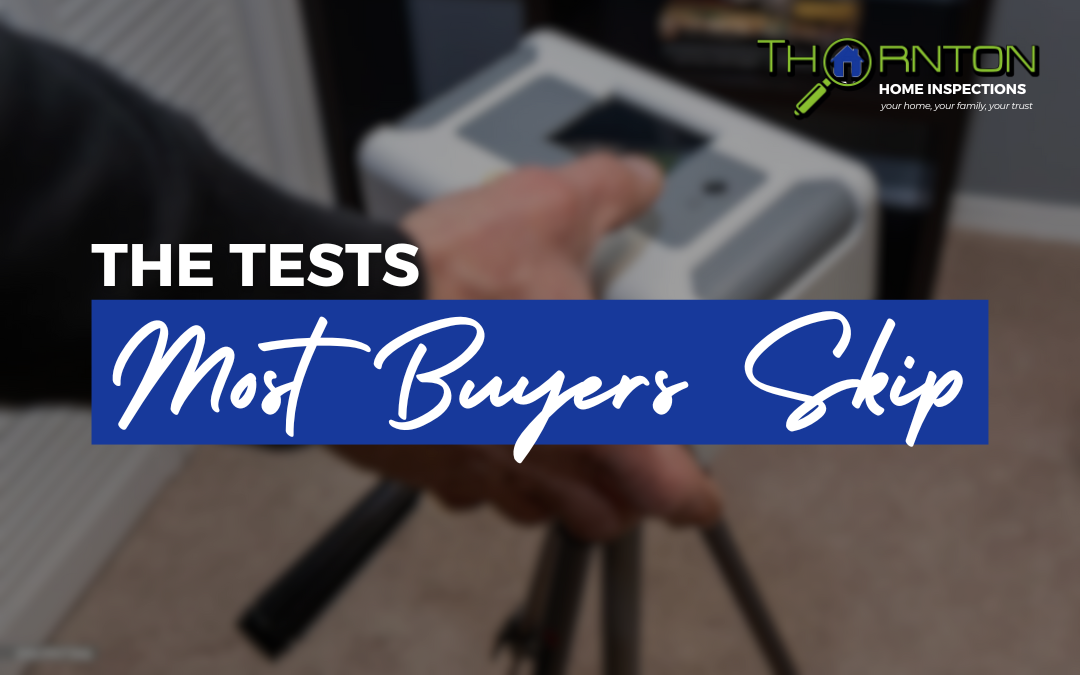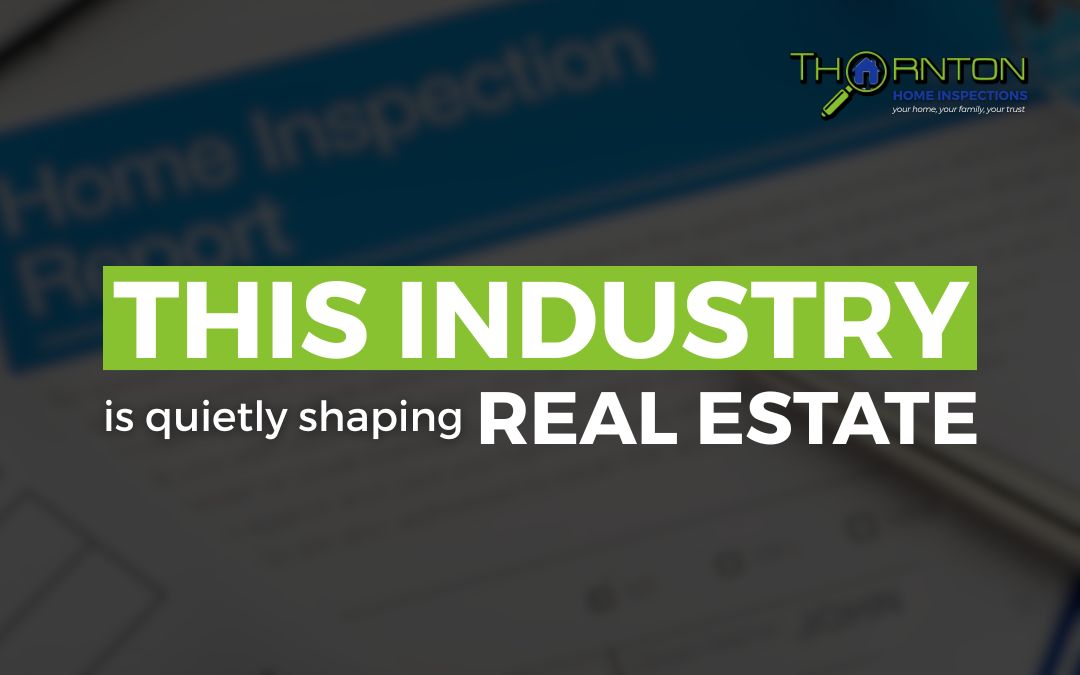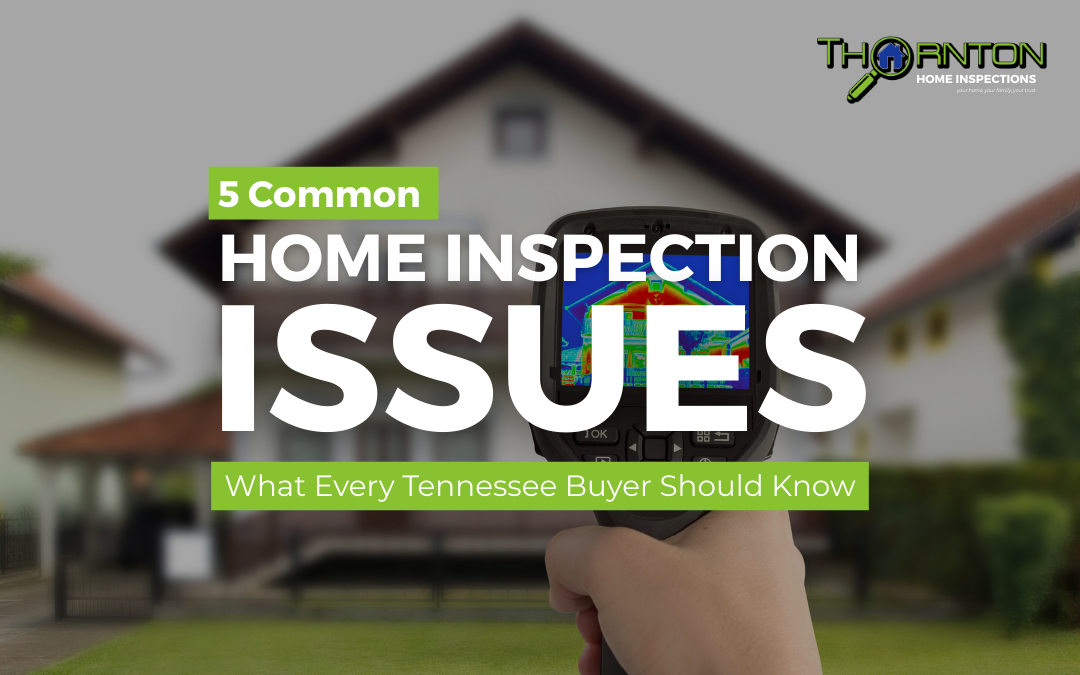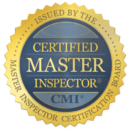
by Desmond Thornton | Nov 8, 2025 | Home Inspections
The Risks You Can’t See
When evaluating a home, it’s easy to focus on visible features like the roof, structure, and finishes. Yet some of the most serious issues are invisible. Mold growth and radon gas can quietly affect air quality and long-term health without any clear warning signs.
In Chattanooga’s humid climate and clay-rich soil, both concerns appear more often than many buyers realize.
Understanding Mold Testing
Mold thrives where moisture persists — in crawl spaces, basements, or behind drywall. Even in well-kept homes, hidden leaks or poor ventilation can allow spores to spread.
Professional mold testing uses air and surface samples to identify the type and concentration of spores, which helps determine whether a moisture or contamination problem exists.
The goal isn’t just to find mold, but to understand what caused it. Tracing sources of moisture early prevents structural damage and keeps indoor air quality within safe levels.
Understanding Radon Testing
Radon is a naturally occurring radioactive gas released from rock and soil. It’s invisible, odorless, and can enter homes through cracks, drains, or foundations.
According to the U.S. Environmental Protection Agency (EPA), radon is the second leading cause of lung cancer in the United States. The only way to know a property’s level is through testing — there’s no other reliable indicator.
In some areas of Hamilton County and the greater Chattanooga region, geological conditions make elevated radon levels more likely. Because results can vary from one property to another, testing each home individually is the safest approach.
Why Testing Matters for Buyer
Adding mold and radon testing to a standard home inspection helps buyers make decisions based on a complete understanding of a property’s health and safety.
Results from these tests provide objective information that can guide next steps — whether that means further evaluation, remediation, or simply peace of mind knowing levels are normal.
By identifying air-quality issues before closing, buyers avoid unexpected expenses later and can plan improvements that make the home safer and more comfortable.
A Thoughtful Step Toward Long-Term Safety
Home inspections are designed to protect buyers from costly surprises. Mold and radon testing extend that protection to the unseen parts of a home — the air and environment that will matter most after move-in.
In a region like Chattanooga, where humidity and soil conditions increase these risks, including both tests is a practical and responsible choice for anyone purchasing a home.
External Resource
For more on radon safety and testing guidelines, visit the U.S. Environmental Protection Agency (EPA) at epa.gov/radon.

by Desmond Thornton | Nov 1, 2025 | First Home Buyers
Don’t Let Home Inspection Mistakes Derail Your First Purchase
Buying your first home is exciting — especially in markets like Chattanooga, TN and Ringgold, GA, where historic properties and growing neighborhoods attract many first-time buyers. But with excitement often comes inexperience, and skipping key steps in your home inspection can lead to expensive surprises.
According to national housing data, 86% of home inspections uncover at least one issue that buyers didn’t notice on their own. In Chattanooga, where heavy rainfall and older housing stock are common, those issues often involve drainage, foundation movement, and moisture intrusion.
Below, the experts at Thornton Home Inspections outline the most common home inspection mistakes — and how first-time buyers can avoid them.
Skipping the Home Inspection to “Save Time”
In competitive markets, some first-time buyers are tempted to waive their inspection to make their offer more appealing. However, this decision often backfires.
Without a professional inspection, you may overlook structural damage, electrical hazards, or hidden water issues — repairs that can cost thousands after closing.
Local tip: In Ringgold, where termite activity is high due to Georgia’s humid climate, skipping an inspection can mean inheriting an active infestation. Always make your offer “contingent upon a satisfactory inspection.”
Choosing the Cheapest Inspector Instead of the Most QualifiedHow Market Conditions Influence Inspection Demand
A low inspection fee can be tempting, but it’s often a red flag.
Certified inspectors — like those at Thornton Home Inspections — invest in ongoing education, advanced tools (such as infrared cameras), and insurance coverage that protects you.
Pro insight: Always confirm that your inspector is licensed in Tennessee and/or Georgia, carries E&O insurance, and provides a detailed digital report with photos.s
Not Attending the Inspection
Many first-time buyers assume reading the report is enough. But being present gives you firsthand understanding of the home’s condition and a chance to ask questions.
Inspectors can point out maintenance tips, safety concerns, and future repairs. In Chattanooga’s hilly terrain, for example, grading and runoff are frequent concerns that are best explained in person.
Ignoring Specialized Inspections
A general home inspection covers visible components, but some problems require specialized testing.
For older or hillside homes common in the region, Thornton Home Inspections often recommends:
Sewer scope inspections – Especially for older homes with cast iron pipes.
Radon testing – Chattanooga sits in a moderate-to-high radon zone.
Termite/Wood-destroying organism (WDO) inspections – Crucial for Ringgold’s humid climate.
Failing to Review the Report with Your Realtor
Your inspection report isn’t the end — it’s a negotiation tool. Work with your realtor to understand which issues warrant repair requests, price adjustments, or walking away altogether.
In the Chattanooga market, common repair negotiations include HVAC age, roof condition, and foundation stability — all high-cost items worth reviewing carefully.
Make Your First Home Purchase a Smart One
First-time homebuyers in Chattanooga and Ringgold can protect their investment by avoiding these inspection mistakes and partnering with trusted professionals.
With Thornton Home Inspections, you get transparent reporting, local expertise, and the confidence to move forward with clarity.
Schedule your inspection today and ensure your first home is a safe, sound investment.

by Desmond Thornton | Oct 24, 2025 | Home Inspections, Informational Material
The home inspection industry is evolving — and fast. In recent years, more homebuyers and homeowners have recognized the value of professional inspections not just as a formality, but as a critical step in protecting their investment.
According to Mordor Intelligence, the global building inspection services market is valued at USD 9.76 billion in 2025 and projected to reach USD 13.91 billion by 2030, reflecting a 7.3% compound annual growth rate (CAGR). Likewise, Verified Market Reports estimates that the broader home inspection service market will grow from USD 4.5 billion in 2024 to USD 8.2 billion by 2033 — a steady 7.5% CAGR.
This impressive growth reflects how essential inspections have become in today’s real estate environment. With rising property values, aging housing stock, and more informed buyers, home inspection industry trends clearly show that consumers are investing in peace of mind, safety, and financial protection.
Why the Industry Is Expanding
Several factors are driving this surge in inspection demand:
- Increased Awareness and Education – Buyers today have access to more information than ever before. Online resources, real estate advisors, and lender requirements all emphasize how an inspection can prevent costly post-purchase surprises.
- Aging Housing Inventory – Many homes across the U.S. were built decades ago and now require closer attention. Inspections help identify deferred maintenance, outdated systems, and hidden safety issues.
- Rising Transaction Volume – With consistent housing activity and turnover, the number of real estate transactions continues to climb, each requiring a trusted inspection process.
- Technology and Transparency – Modern inspectors now use digital reporting tools, drones, and infrared cameras to uncover issues invisible to the naked eye — and to deliver clear, photo-rich reports that empower clients to make confident decisions.
Professional Standards and Consumer Protection
A defining trend in the home inspection industry is the shift toward higher professional standards and regulatory oversight. Many states now require licensing, insurance, and adherence to strict standards of practice — ensuring that inspectors meet clear qualifications.
For example, in Tennessee, the Department of Commerce & Insurance licenses over 2,000 inspectors who must complete formal education, pass the National Home Inspector Examination, and follow a professional code of ethics. This growing regulatory focus mirrors the national movement toward greater consistency and consumer protection.
When you hire a licensed inspection company like Thornton Home Inspections, you’re choosing transparency, accountability, and technical expertise backed by industry regulation and best practices.
How Market Conditions Influence Inspection Demand
The real estate market’s natural cycles also shape inspection trends. In competitive markets, buyers use inspection reports as leverage for negotiations or as a reason to request seller repairs. In slower markets, sellers invest in pre-listing inspections to build buyer confidence and stand out from other listings.
Regardless of timing, a quality inspection helps both sides reduce risk and speed up transactions — which is why inspection services remain resilient even when the housing market cools.
Looking Ahead: The Future of Home Inspection Industry Trends
As the industry continues its upward growth, several long-term trends are shaping the future:
- Integration of smart technology and AI for predictive maintenance insights.
- Greater focus on environmental testing (mold, radon, air quality).
- Expansion into energy-efficiency assessments and green certifications.
- Enhanced consumer experience, from same-day reports to virtual consultations.
These advancements mean the next generation of inspections will be even more detailed, efficient, and client-friendly — offering clearer insights and greater confidence to every homeowner.
Where the Industry Is Headed
The latest home inspection industry trends confirm one thing: inspections are no longer optional — they’re essential. As the global market grows and professional standards rise, homebuyers and homeowners alike are placing more trust in qualified inspectors to guide their decisions.
Whether you’re purchasing your first home or maintaining your current one, a professional inspection provides the clarity, safety, and confidence that every property owner deserves.
Thornton Home Inspections continues to focus on what matters most: delivering accurate, reliable assessments that help homeowners and buyers make confident, informed choices.

by Desmond Thornton | Sep 29, 2025 | Home Inspections, Informational Material
When purchasing a home in Tennessee, a home inspection is one of the most important steps in the process. But many buyers ask: what do inspectors actually look for, and which issues really matter? While no house is flawless, knowing the most common Tennessee home inspection issues helps buyers separate minor repairs from major red flags.
At Thornton Home Inspections, we guide Tennessee buyers through inspection reports so they can make confident, informed decisions. Below are the five most frequently noted problems — and what they mean for your purchase.
1. Roofing Problems in Tennessee Homes
From missing shingles to leaks, roofing concerns are among the most common findings in a home inspection.
Why it matters: A compromised roof can lead to water damage, mold, and expensive repairs.
Critical or not? Minor wear may be manageable after closing, but active leaks or structural roof damage often require repairs before the sale can move forward.
2. Electrical System Defects
Outdated wiring, overloaded circuits, or faulty panels are regularly flagged in Tennessee homes, especially older properties.
- Why it matters: Electrical issues pose fire and safety risks and may not meet current code.
- Critical or not? Many issues require immediate attention. While not always a deal breaker, lenders frequently require electrical problems to be corrected before closing for safety compliance.
3. Plumbing and Water Concerns
Leaky faucets, corroded pipes, or poor drainage show up frequently in inspection reports.
- Why it matters: Unchecked plumbing issues can cause hidden water damage and high utility bills.
- Critical or not? Most plumbing issues are repairable and negotiable, but major sewer line damage or persistent leaks could delay or derail a sale.
4. Foundation and Structural Concerns
Cracks in walls, uneven floors, or moisture intrusion around the foundation raise red flags during Tennessee home inspections.
Why it matters: Structural integrity directly affects long-term safety and property value.
Critical or not? Moderate settling is common and usually manageable. However, major foundation movement or instability is often considered a deal breaker until properly addressed.
5. HVAC System Problems
Aging furnaces, non-functioning AC units, or poor maintenance records often appear in Tennessee inspection reports.
- Why it matters: Comfort and energy efficiency depend on a reliable HVAC system.
- Critical or not? Usually negotiable. Buyers may request replacement, repair credits, or warranties, but HVAC issues rarely kill a deal outright.
Which Issues Can Stop a Sale?
Of the five, two stand out as most likely to prevent closing if not resolved:
- Major roofing problems (active leaks or structural damage)
- Significant foundation issues (serious cracks or instability)
The rest — electrical, plumbing, and HVAC — are often negotiable between buyer and seller. With a clear inspection report, buyers can separate deal breakers from normal maintenance concerns.
FAQs About Tennessee Home Inspections
What are the most common Tennessee home inspection issues?
Roofing problems, electrical defects, plumbing issues, foundation concerns, and HVAC problems are the top five.
Do sellers have to fix inspection issues in Tennessee?
Not always. Many repairs are negotiable, but safety or lender-required items may need to be addressed before closing.
How can buyers prepare for a home inspection?
Work with a licensed Tennessee inspector, review sample reports ahead of time, and budget for possible repair negotiations.
A professional inspection isn’t about passing or failing a house — it’s about understanding what you’re buying. By knowing the most common Tennessee home inspection issues, buyers can negotiate repairs with confidence and avoid costly surprises after closing.
Thornton Home Inspections gives Tennessee buyers peace of mind before signing on the dotted line. Don’t let hidden issues derail your home purchase.
Schedule your Tennessee home inspection today.

by Desmond Thornton | Sep 13, 2025 | Home Inspections, Informational Material
Why Home Inspection Reports Can Derail Sales
It’s one of the most frustrating truths in real estate: deals fall apart after the inspection.
According to Redfin, nearly 15% of pending home sales fell through in May 2025—the highest cancellation rate ever recorded for that month. A Business Insider analysis found the same pattern in July: over 15% of purchase agreements collapsed, the highest level since 2017.
Yes, mortgage rates and affordability pressures are part of the story. But in many cases, the real deal-breaker is the home inspection report.
Here’s the problem: buyers make offers in the dark. Then the inspection reveals costly repairs, outdated systems, or hidden risks. Excitement quickly turns into hesitation, often ending in withdrawal. The result? Weeks of wasted time, broken contracts, and lost trust.
The Limits of Traditional Pre-Listing Inspections
Some sellers and builders try to get ahead by ordering pre-listing inspections. But these come with built-in flaws:
- The seller sees the report, which makes buyers doubt its neutrality.
- Most buyers still order their own inspection, adding redundancy, delays, and extra cost.
- Sellers resent paying inspection fees upfront, with no guarantee of recovery.
Instead of creating clarity, the old model creates more questions than answers.
How the Good Faith Inspection Program Builds Buyer Trust
The Good Faith Inspection Program (GFIP) reimagines how inspection data is delivered. Instead of hiding behind fine print or pushing costs forward, GFIP puts truth first:
- Inspection First, No Upfront Cost: Homes are inspected before they hit the market. Builders and sellers pay nothing upfront.
- Buyer Access via QR Code: A sign at the property lets buyers scan and instantly purchase the discounted inspection report.
- Refund Option for Sellers: If three or more buyers buy the report, the seller is refunded in full.
- No Report Sharing with Seller or Builder: The inspector’s findings go directly to buyers—ensuring objectivity and transparency.
This approach transforms the home inspection report from a deal-breaker into a deal-builder.
Who Benefits from Transparent Inspections?
For Buyers
- Review the inspection report before making an offer
- Avoid costly surprises after signing
- Negotiate with confidence.
For Sellers & Builders
- Protect reputation with full transparency
- Reduce deal fallout and lowball offers.
- Pay nothing upfront—and possibly nothing at all.
For Agents
- Spend less time rescuing contracts.
- Present cleaner, stronger offers.
- Position yourself as a consumer-first advisor.
The Future of Real Estate Transactions: Truth Over Trust
In today’s market, promises aren’t enough. Buyers don’t want fine print—they want proof.
A home inspection report shouldn’t arrive as a shock weeks into the process. It should be the foundation of informed, confident negotiations. The Good Faith Inspection Program makes that shift possible by delivering unbiased data to buyers first.
Truth builds stronger deals. GFIP makes it possible.









